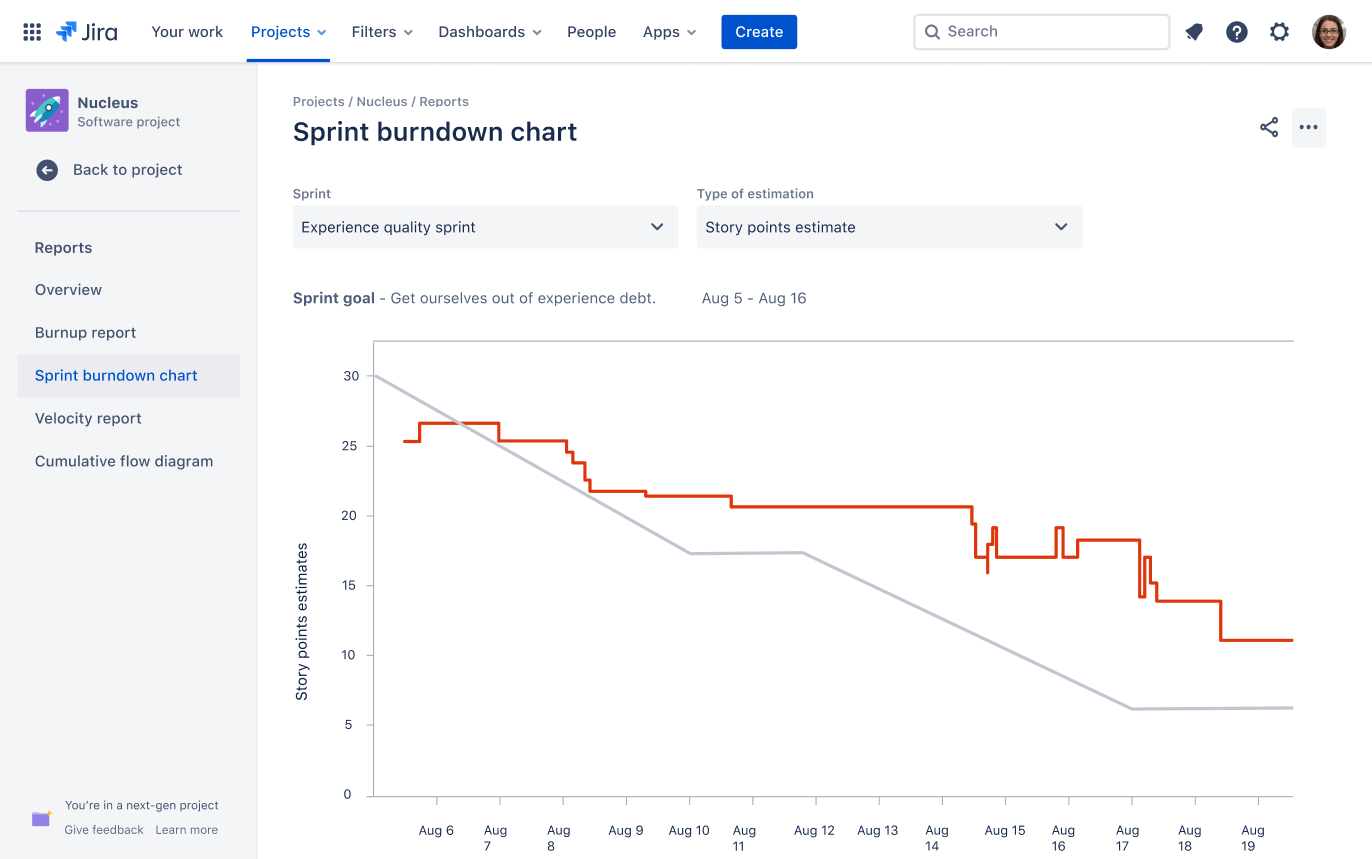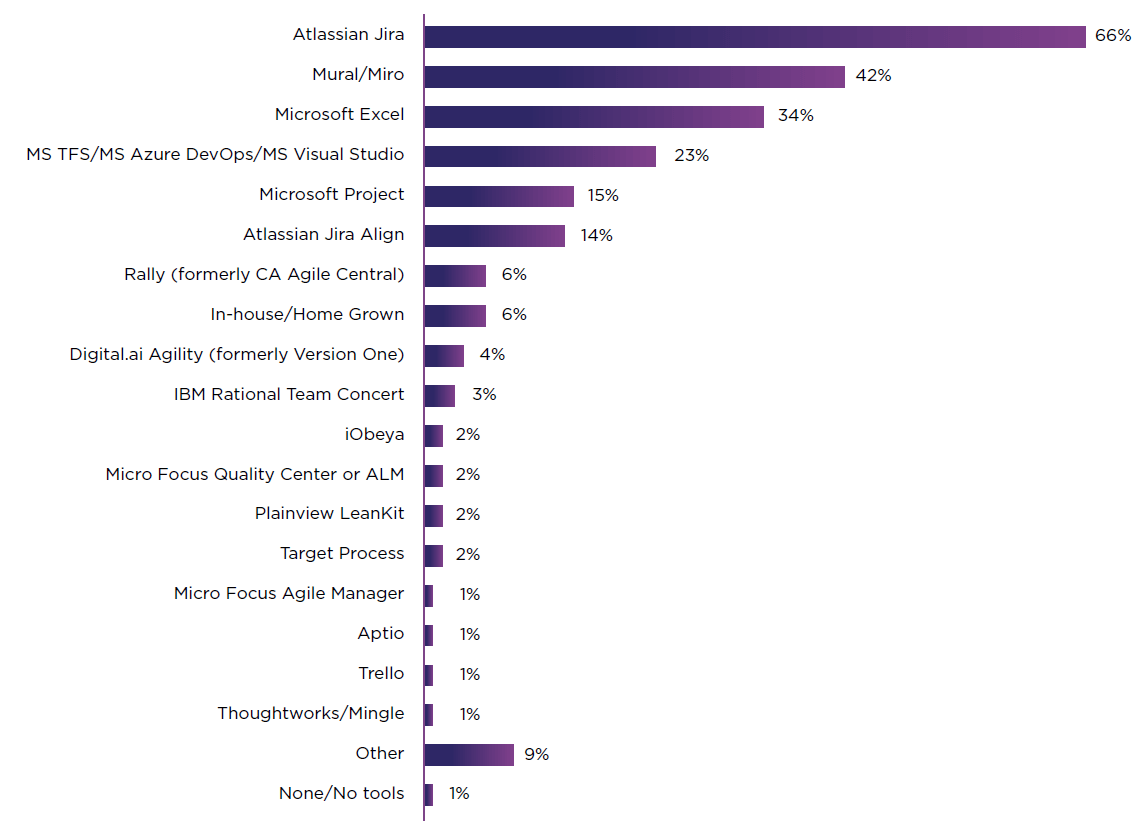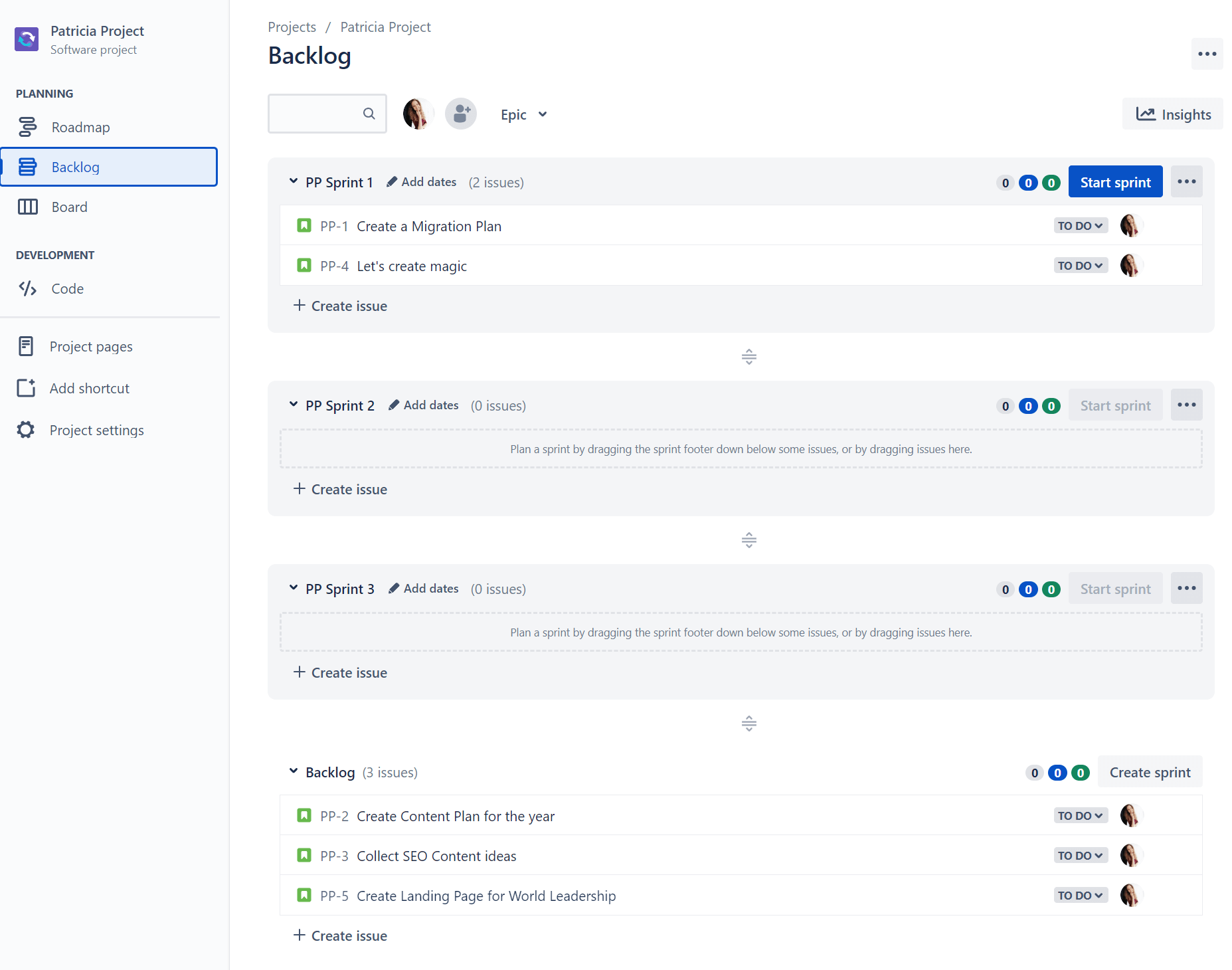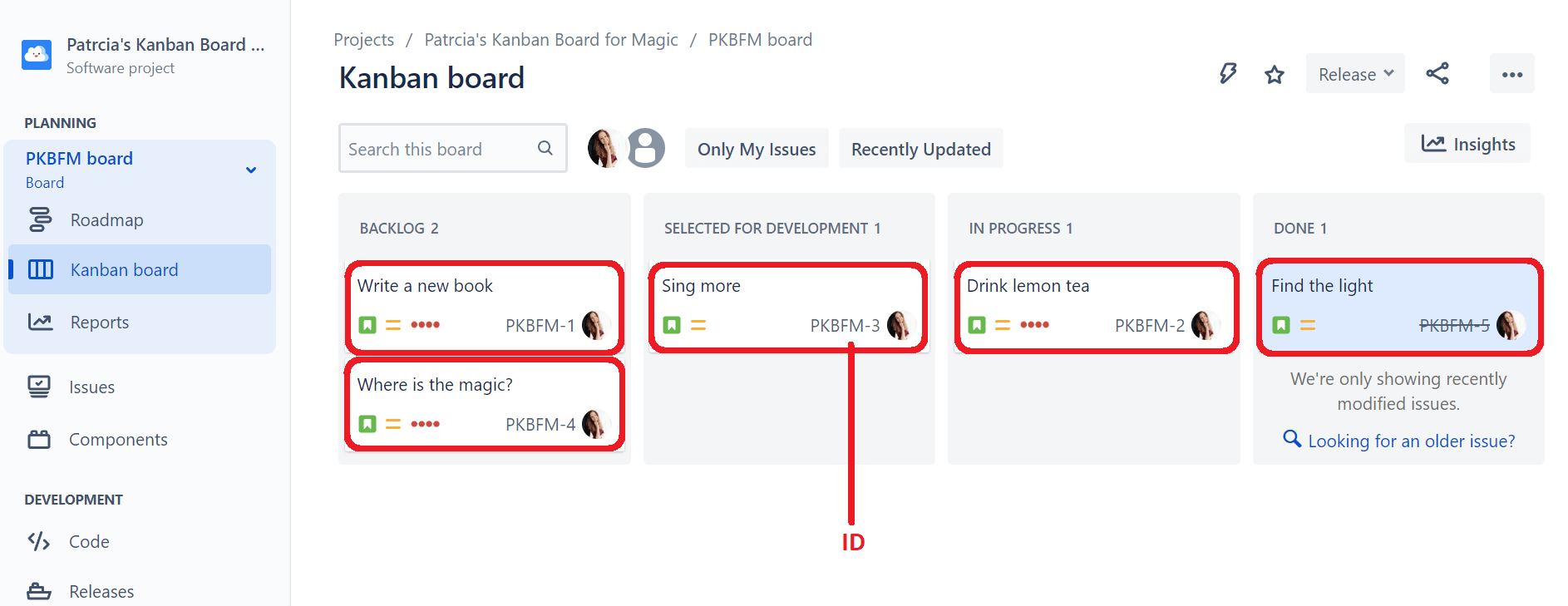Community resources
Community resources
Community resources
What is Jira Software, and why use it? 🤔💡
As a project manager, you are constantly looking for new ways to improve your project management to ensure success. However, you are often faced with the challenge of coordinating a multitude of diverse tasks at the same time. So, how can you easily manage tasks?
For this concern, over 65,000 organizations worldwide, including major corporations like Spotify, eBay, and Airbnb, trust the Jira ticketing system. But what exactly is Jira, and what makes it so popular around the world?
In this article, you'll learn everything you need to know about Jira, why so many companies use it, and what benefits the tool brings to your use case.
What is Jira?
When people talk about Jira, they usually mean “Jira Software”. Jira Software is used to manage projects and track bugs, among other things. Developed by the Australian company Atlassian in 2002, Jira Software receives regular updates. Originally, Jira Software was created to support software teams in bug tracking. Now, Jira Software is known worldwide and has become one of the most widely used project management software solutions in the world. With Jira Software, agile teams can dynamically manage scrum management, software development, bug tracking, professional service management, marketing, content management and much more.
In addition to Jira Software, there are also similar variants such as Jira Service Management, Jira Align, and Jira Work Management. However, since Jira Software is the most popular among these tools, “Jira” has become a quasi-synonym to “Jira Software”. We will also use the shortened term to refer to Jira Software in the following!
What is the purpose of Jira?
THE ONE purpose of Jira basically does not exist, as Jira Software can be used for multiple activities. Jira is an intuitive and agile project management platform that enables teams to dynamically plan, track and manage their workflows and projects. Jira offers numerous features like sprints for Scrum management and other agile boards like Kanban. This allows teams to effectively and efficiently organize projects, define, assign and prioritize tasks. Furthermore, Jira is ideal for progress tracking, bug tracking and complete transparency throughout the entire project lifecycle.
Why is Jira so popular? 💛
According to Digital.ai’s latest annual State of Agile report, two-thirds of all respondents use Atlassian’s Jira to manage agile projects:
The annual State of Agile report is a significant resource that maps insights into key trends in the agile world. It draws its findings from a survey of over 3,000 people in the agile community.
Thus, Jira is the undisputed number one agile project management tool. But why, exactly?
Here are some reasons why Jira is so popular
-
Flexibility
-
Trello, Excel, Master Task and others also have their strengths when it comes to planning projects. But no other tool convinces with such a high flexibility to individualize tasks, processes and projects in such a way. For various use cases like project management, bug tracking up to customer support, Jira Software supports you.
-
-
Customizability
-
With Jira, teams don’t have to adapt to the tool; the management system simply adapts to the dynamic needs of different teams. Whether you work in an agile or waterfall model, it doesn’t matter with Jira. Either way, Jira can give your management a boost.
-
-
Marketplace
-
What Jira doesn’t offer you “out of the box” can be found in the Atlassian Marketplace. Numerous extensions, integrations, and plug-ins are waiting for you to adapt the powerful Jira even more individually to your specific requirements.
-
-
Scalability
-
Are you a young start-up? Then Jira’s excellent scalability is a compelling reason to use the tool. After all, Jira can easily grow with your business and vision, and can be deployed at any size company.
-
-
Usability
-
As mentioned earlier, Jira was originally developed for software teams, but it is also easy to use for users without any technical knowledge.
-
-
Collaboration
-
Digital collaboration between remote teams is immensely simplified thanks to collaboration tools like Jira. Teams can exchange comments and feedback in real time.
-
-
Reporting capabilities
-
With twelve report templates, Jira is ready to go. This allows managers to gain instant visibility into the performance of their teams to measure progress and identify bottlenecks. Sprint reports, velocity charts, version reports, or even burnup and burndown charts are an ideal start for reporting.
-
We also asked our Co-CEO and numerous certified Principal Consultant Gregor Kasmann about the popularity of Jira and why so many agile managers use it worldwide. He particularly notes:
“Excellent agile project planning stands and falls with a customizable task management solution. Here, Jira is unbeatable in its flexibility because Jira can be used for various project management methodologies, such as Scrum, Kanban, ScrumBan, Waterfall, or V-Model. This versatile tool is a powerful tool that grows together with your business vision. In numerous scenarios, especially in the digitization of internal processes in specialized departments, it proves to be a success-promising tool.” – Gregor Kasmann
📋 The most important elements of Jira
The question of why Jira is so popular and frequently used can best be answered if we take a closer look at the individual elements of Jira software. After all, it is these that make a transparent, dynamic and agile way of working possible in the first place.
Boards
Boards in Jira are the central element that visualize tasks and progress of a project. There are different board types like Kanban or Scrum boards to meet varying requirements of diverse teams.
Here you can see a Kanban board, which unlike a Scrum board (below) does not have a backlog:
Issues/tickets
Issues in Jira are small tasks that need to be completed within a project to achieve the goal of the project. A Jira issue can be completed with comments, assignments, statuses, and priorities. An unique ID makes it easy to track progress.
Workflows
The path that Jira issues follow is called a workflow. Jira has built-in workflows, but you can also create your own.
Fields
In Jira Software, there are system fields and custom fields. Both of them are used to collect information in the issue, which makes it easier to process the tasks.
Reports
Jira reports provide detailed information on team performance and thus can help in better future resource planning.
 https://www.atlassian.com/software/jira/features/reports
https://www.atlassian.com/software/jira/features/reports
Of course, these are just the most important of the many components in Jira. But it should be enough to gain a good first overview.
How Jira Software works
If we want to know WHY to use Jira, we first need to clarify HOW to use it. So let’s look at Jira with a very practical example and make complex project management more approachable.
Planning a move with Jira
Let’s say you are planning a move to a new city, to a new apartment. You would surely create a to-do list at the beginning – just do it in Jira! Buy boxes, pack boxes, rent a van, pick up keys, all these things are tasks or Jira issues. Since you can’t do everything at once, discuss with your partner or friends. Larissa buys boxes, Moritz packs them later … In Jira, you simply assign the created tasks to the people. Through the IDs of the issues, you can see exactly whether Larissa has already bought the boxes or not. If not, Moritz doesn’t even need to start packing!
Thanks to Jira, everyone involved in a project can see what’s due and when, what the priorities are, and which tasks are behind schedule.
So, the next time you move, keep Jira in mind! Maybe the tool can help you have a more relaxed move.
Use cases for Jira Software ✔️
Although originally developed for software teams, 50% of all Jira users today use the software for non-IT projects. Unfortunately, there are no separate statistics for move management.
Therefore, why teams around the world use Jira varies from industry to industry.
Here are some use cases for Jira
-
Software development
-
By its nature, Jira is of course particularly well suited for software development teams. Developers in production and IT use Jira’s features to manage their projects in Scrum or Kanban boards. Additional integrations with numerous CI/CD tools facilitate development. Furthermore, Jira can be perfectly used to collaborate with stakeholders thanks to transparent roadmaps. With Jira, teams can cover the entire software development lifecycle and identify potential errors early on.
-
-
Marketing
-
Jira Software is popularly used by marketing teams to plan marketing campaigns or social media posts, manage content, and track the progress of projects. The single-source feature in particular makes it easy to assign tasks from a single project to multiple team members. Creating templates and simplifying the feedback process on tasks improves communication and collaboration within and outside the team. The efficient transformation of the content plan into Jira tickets also streamlines marketing processes.
-
-
Human Resources
-
Using Jira software, HR teams can reduce administrative work and ensure seamless onboarding. Furthermore, Jira helps the HR department gather employee feedback. Then, performance management is easy by recording goal agreements, performance reviews, as well as team development milestones. Custom workflows further streamline the hiring and onboarding processes.
-
-
Accounting and finance teams
-
With Jira, finance teams and accounting departments can conveniently develop process plans for creating expense reports and reconciliations to increase efficiency and transparency. Budget management, invoicing, payroll, as well as reporting are clearly managed thanks to agile Jira boards. In this way, collaboration between other departments that interact with finance is strengthened, resulting in a more efficient financial management process. Built-in tracking features also ensure smooth time tracking and billing.
-
-
Project Management
-
Agile boards, Gantt charts, task managers, time and resource management, and reporting features are key points of successful project management – and built into Jira Software. Sprint planning helps you delegate tasks across your team and complete them on time. Transparent prioritization means every team member knows which task should be completed first.
-
-
Customer service
-
Thanks to the use of Jira, tickets for customer requests can be quickly created and assigned to the responsible person in an automated way. Setting deadlines allows maintaining satisfactory response times for customers. In addition, Jira allows customer service teams to create templates for frequently asked questions or issues to ensure efficient and consistent handling of customer requests.
-
-
Design
-
With Jira, design teams create tasks that they can dynamically push to different stages of the design process. Feedback from stakeholders and design assets are quickly organized with Jira tickets. Integrations with third-party design tools, such as Sketch or even Adobe Creative Cloud, make it possible to switch seamlessly between design and development workflows.
-
-
Sales
-
Sales teams use Jira software to manage their sales process from lead generation to closing a deal. Time tracking in Jira helps sales teams track exactly which lead they spend how many hours on. Reporting to the sales lead provides better visibility into how to conduct future sales calls, product demonstrations, and other sales activities.
-
Upcoming changes to Jira Services ☁️
Jira Software is a web-based application and can be hosted on Server/Data Center or in the Cloud so far. If you travel in the Atlassian world, you already know, if not, we’ll reveal how Jira services will change in the coming months.
Atlassian Server products (including Jira) have been discontinued since February 2, 2021.February 15th, 2024, is the so-called Atlassian End of Server Support. After this date, Atlassian will stop supporting its server products. For you as a customer, this means that no security patches, updates, or bug fixes will be provided after this date. Technical support will also end.
This does not mean that you will no longer be able to use Jira after this date. Rather, Atlassian is focusing on further development of Cloud products. So if you are hosting Jira Software on Servers or Data Center yourself, it is worth considering a migration.
📈 The advantages of Jira at a glance
Although we have already gone into the numerous fields of usage for which Jira can be applied, we would now like to take a look at the advantages of Jira Software at a glance:
-
Generalist tool that can accompany an entire project or product from start to finish.
-
Agile task management for various methods such as Scrum, Kanban, Lean, Design Thinking and others
-
Intuitive operation and comfortable user interface
-
Flexibility and customization options as you need it
-
Data protection thanks to user-defined roles and encryption in the Jira Cloud
-
Over 1000 Jira extensions available through Atlassian Marketplace
-
Transparent task management as well as progress monitoring
-
Continuous improvements and updates in the Jira Cloud
-
Collaboration support for remote teams through extensive commenting functionality
-
Can also be used on mobile devices regardless of location
-
Data residency selectable in the Atlassian Cloud
-
Customizable dashboard for self-optimization
What are the limitations of Jira?
Why it is worth using Jira has been mentioned several times by now. But what exactly are the limitations of Jira Software? What can’t the agile industry leader do? For one thing, Jira’s flexibility and complexity can also be a drawback, making it difficult to learn Jira. Further, customizing the configurations of Jira workflows or Jira schemes often sounds easier than it turns out to be in reality. In-depth knowledge of the Jira functions is required here. Some critical voices also criticize the comment function: It is not sufficient to ensure transparent and trusting collaboration. Finally, the Atlassian Marketplace is also a double-edged sword. In the flood of choice, it can be difficult to find the plug-in that exactly fits your requirements.
It is important to note that the limitations of Jira just mentioned do not apply equally to all companies and use cases. Likewise, there are numerous ways to overcome the limitations of Jira Software and get the most out of the powerful tool. Great Atlassian solution partners all around the world are happy to help you here!
So why Jira? A conclusion ⭐
Our article has shown that Jira Software is a powerful tool that helps project managers and teams plan projects more effectively. Thanks to clear boards, you can always keep track of progress. Assigning tasks (small from packing boxes to Cloud Migration) and the ability to leave comments also makes it easier for remote teams to work together. Another reason to use Jira is its high flexibility and customizability. No other ticket system can be applied to so many use cases and methodologies. Integrations and extensions adapt Jira to your specific needs.
So, all in all, there are numerous reasons why Jira is the first choice for task management.
Was this helpful?
Thanks!
Andreas Springer _Actonic_
About this author
Head of Marketing
Actonic GmbH
Germany
2 accepted answers





4 comments